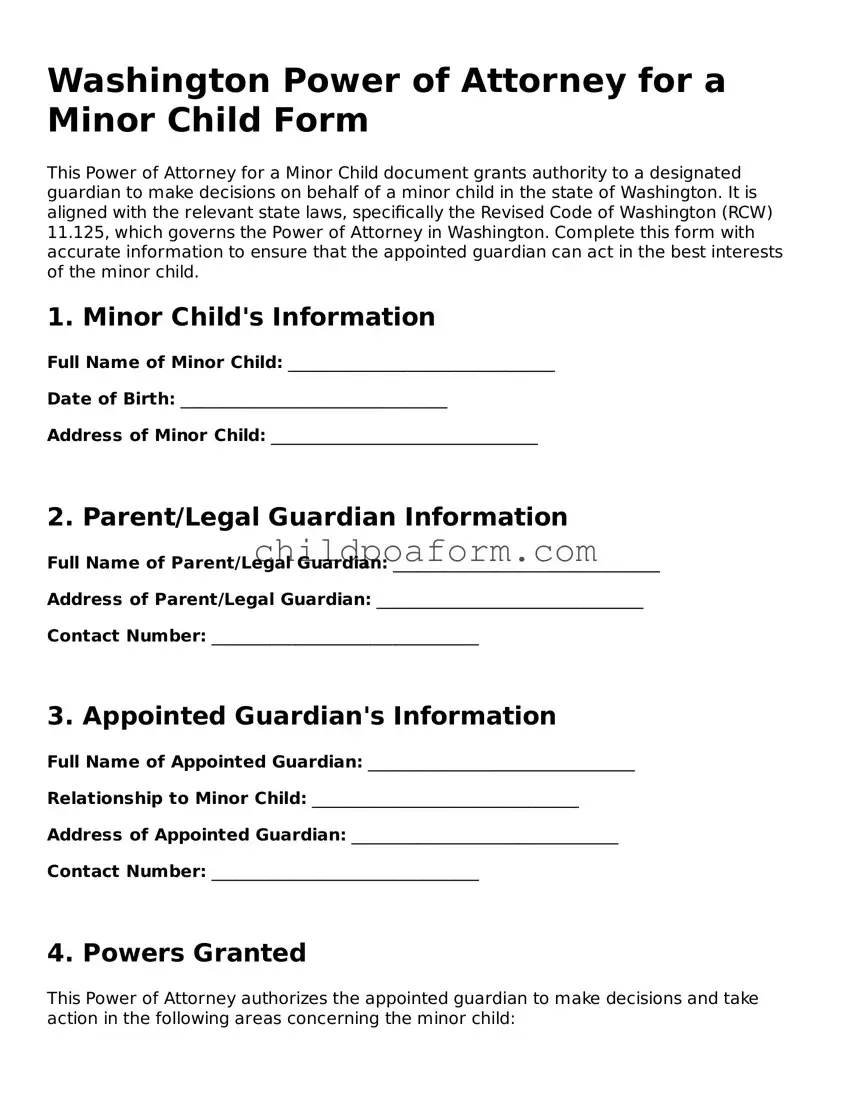Instructions on Utilizing Washington Power of Attorney for a Child
The subsequent steps are designed to guid individuals through the process of completing the Washington Power of Attorney for a Child form. This document is a vital tool for assigning another person, often referred to as the agent or attorney-in-fact, the authority to make decisions and take actions on behalf of a child or children in your care. It’s crucial to approach this task with attention to detail to ensure the document accurately reflects your intentions and adheres to Washington state laws. Safety, continuity of care, and the well-being of the child are paramount, prompting the need for clarity and precision in filling out this form.
- Begin by filling in the date at the top of the form. This marks when the Power of Attorney (POA) will start to take effect.
- Write the full legal names and addresses of the parent(s) or current legal guardian(s) in the designated space. In recognizing the parties involves, this step clarifies who is granting the POA.
- Identify the appointed agent by writing their full legal name and address. This person will assume responsibility for the child under the terms of the POA.
- Next, detail the child’s information, including their full legal name and date of birth, to specify who the POA concerns. This step ensures there’s no ambiguity about the identity of the child in question.
- Outline the specific powers granted to the agent. This can encompass decisions regarding the child’s education, medical care, and general welfare. Be as precise as possible to convey the extent and limitations of the agent’s authority clearly.
- Define the POA's duration by indicating the start and end dates. Washington State law may limit the maximum period a POA can remain in effect, typically not exceeding two years for this type of POA, so consult current statutes for guidance.
- If applicable, specify any conditions upon which the POA will terminate earlier than the stated end date. This could include the completion of a specific task or the occurrence of a particular event.
- Sign and date the form in the presence of a notary public. The notary will also need to sign, date, and affix their official seal to the form, making it legally binding.
- Lastly, ensure copies of the completed form are distributed appropriately. The agent should receive a copy, along with any institutions or entities, such as schools or medical facilities, that may require it. Retaining a copy for personal records is also recommended.
The importance of completing the Washington Power of Attorney for a Child form with diligence cannot be overstressed. Omitting crucial information or failing to comply with the required formalities can lead to misunderstandings or a refusal of entities to recognize the document’s validity. Through careful attention to each step and ensuring all relevant parties understand their roles and responsibilities, you can provide for the child’s needs effectively and with peace of kind.
